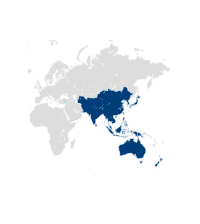Select your region and language
How Chassis Management Improves OpenVPX System Development
Chassis Managers have three primary functions to help keep systems healthy, manage system power and ensure proper cooling.
Blog Post
Chassis Management Defined
VITA 46.11 defines a chassis management architecture for OpenVPX that provides automated oversight and administration tools, which serve to provide better insights into a system’s health. As more intelligent monitoring functions are implemented into OpenVPX applications, the need to properly enable smooth system operation and resource management becomes more important.
A Chassis Manager has three primary functions to help keep systems healthy, manage system power and ensure proper cooling (Figure 1):
- Resource management: discover all intelligent FRUs (IPMCs), boards and sensors in the chassis as well as any other components that support VITA 46.11
- Event monitoring: provide a history of all events on the sensors for each FRU, such as an over-temperature or an under-voltage condition
- Diagnostics and response: flag any abnormal or failed sensors or fans as well as clogged filters; adjust fan speed for irregular temperature conditions; report or shut down due to over-/under-voltage/current conditions
Other components of a chassis management system include the IMPI, or Intelligent Platform Management Interface, which manages and monitors system capabilities independently of the host system, and the corresponding IPMB, or Intelligent Management Interface Bus that facilitates system management and IMPC, Intelligent Management Interface Controller designed to help manage the system.
Layers of Management Functionality
Layers of Management Functionality VITA 46.11 also defines two tiers of functionality for the chassis manager and the IPMC to enable implementation flexibility. Tier 1 is the easiest to implement, while Tier 2 provides the highest functionality (Tier 3 is in development).
Chassis Manager Baseline Tier-1:
- Maintain an FRU population table containing information for each FRU in the chassis, whether a plug-in module or another type of chassis FRU
- Bridge between the System Manager logical layer and the IPMC logical layer
- Maintain IPMC state information for each IPMC in the chassis
Chassis Manager Advanced Tier-2:
- Tier 2 is a superset of Tier 1, but adds functionality and complexity in capabilities
- Support the discovery of each FRU in the chassis
- Support management of chassis infrastructure
- Participate in event generation and reception
- Support event logging
- Support dynamic sensor devices
- Support FRU recovery, including FRU reset and power cycling
- FRU payload control – power, reset, graceful reboot, and initiating diagnostics
IPMC Basic Tier-1:
- Responsibility for system IPMB start-up and fault handling
- Supporting the discovery of the FRU it controls
- Supporting access to the management information for the FRU it controls
IPMC Advanced Tier-2:
- Also a subset of Tier 1, adding more capabilities
- Participate in event generation and reception
- Support dynamic sensor device
The Impacts to on OpenVPX Systems
Chassis managers – as defined in VITA 46.11 – now enable the system designer to find faults before any defects negatively impact the individual board or the entire system; correctly implemented, the chassis manager also can help maintain power levels and reduce overall downtime. Monitoring the health, power and cooling of VPX boards used across military applications, including radar, electronic warfare (EW), communications, sensor processing, etc., is just as important as keeping an eye on the performance and capability of the end system.
When Tier 3 is available, it will also provide reconfigurability for faster redeployment and health monitoring in the event that elements of the chassis start to fail. This becomes even more important as open standards initiatives – such as the Sensor Open Systems Architecture (SOSA) Technical Standard – are making chassis managers a requirement.
Positive Effects from the SOSA Initiative
During development of the SOSA Technical Standard, Consortium members worked together to introduce VITA 46.11 to power supply modules. This was because SOSA requires monitoring of the power supplies for reporting and control. The result is that chassis managers now have the capability to monitor power supplies within a chassis thanks to contributions from the Sensor Open Systems Architecture (SOSA) Consortium to the VITA 62 standard. So, although SOSA was pushing for power supplies to support 46.11, VITA 62.0 is where this is actually implemented.
In addition to power supplies now accepting commands from the chassis manager, a smart board is contained within VPX power supplies, so the PSU can interface with the chassis manager via the IPMB, providing even better oversight of system resources.
Want to learn more about VPX chassis management and how it relates to SOSA initiatives? Download the white paper ”Chassis Managers: Monitoring Chassis Health and OpenVPX and SOSA Aligned Boards in Military Systems“





